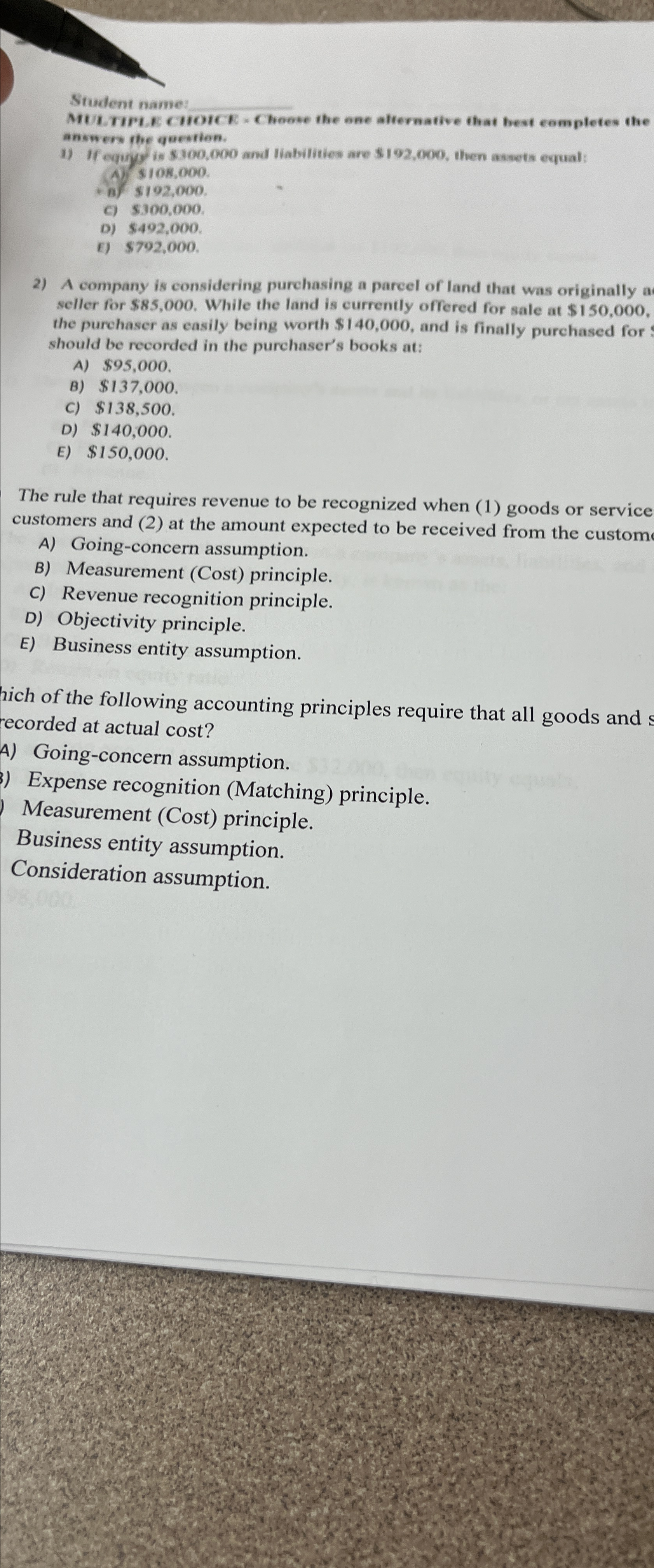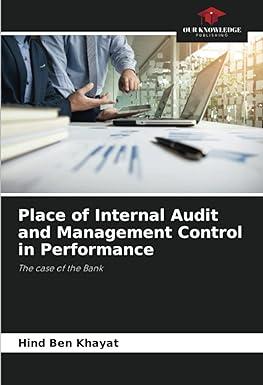Question
Student name anser the que:tion. If equyy is $300,000 and liabilities are $102,000 , then assets equal: A) $108,000 n) $192,000 c) 5300,000
Student name\ anser the que:tion.\ If equyy is
$300,000and liabilities are
$102,000, then assets equal:\ A)
$108,000\ n)
$192,000\ c) 5300,000 .\ D)
$492,000.\ r)
$792,000.\ A company is considering purchasing a parcel of land that was originally a seller for
$85,000. While the land is currently offered for sale at
$150,000, the purchaser as casily being worth
$140,000, and is finally purchased for should be recorded in the purchaser's books at:\ A)
$95,000.\ B)
$137,000.\ C)
$138,500.\ D)
$140,000.\ E)
$150,000.\ The rule that requires revenue to be recognized when (1) goods or service customers and (2) at the amount expected to be received from the custom\ A) Going-concern assumption.\ B) Measurement (Cost) principle.\ C) Revenue recognition principle.\ D) Objectivity principle.\ E) Business entity assumption.\ hich of the following accounting principles require that all goods and s recorded at actual cost?\ A) Going-concern assumption.\ Expense recognition (Matching) principle.\ Measurement (Cost) principle.\ Business entity assumption.\ Consideration assumption.

Step by Step Solution
There are 3 Steps involved in it
Step: 1

Get Instant Access to Expert-Tailored Solutions
See step-by-step solutions with expert insights and AI powered tools for academic success
Step: 2

Step: 3

Ace Your Homework with AI
Get the answers you need in no time with our AI-driven, step-by-step assistance
Get Started


